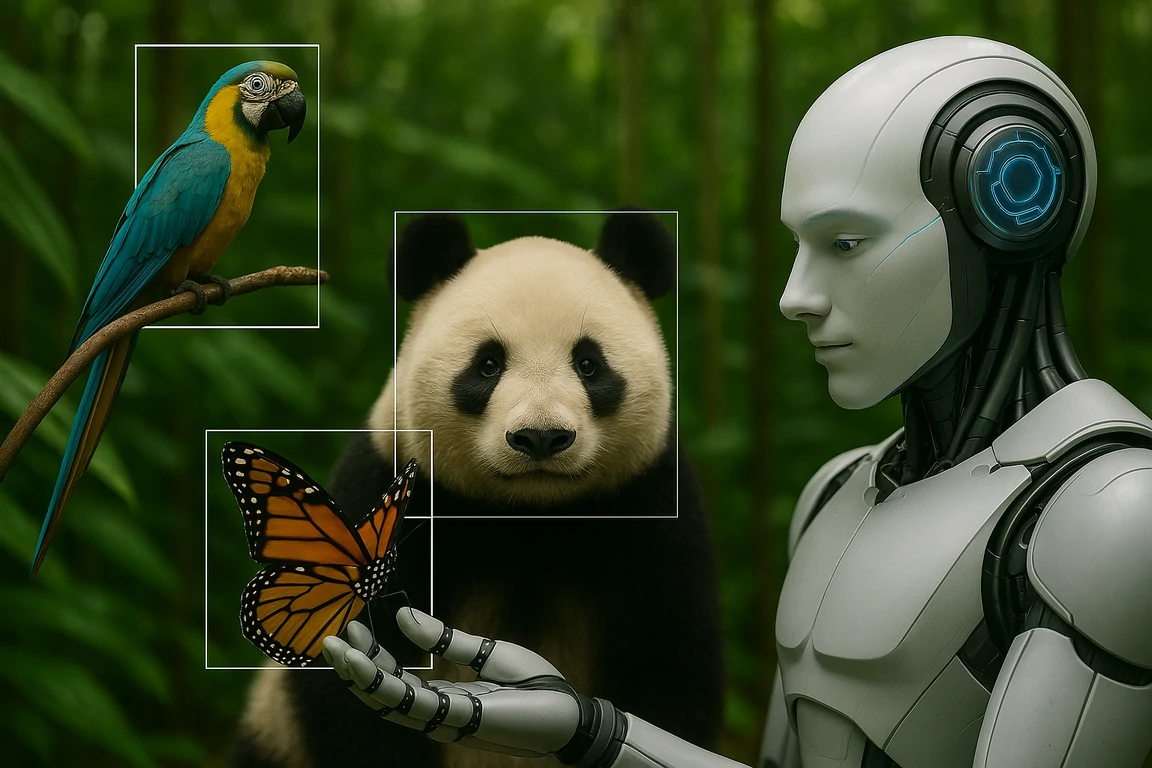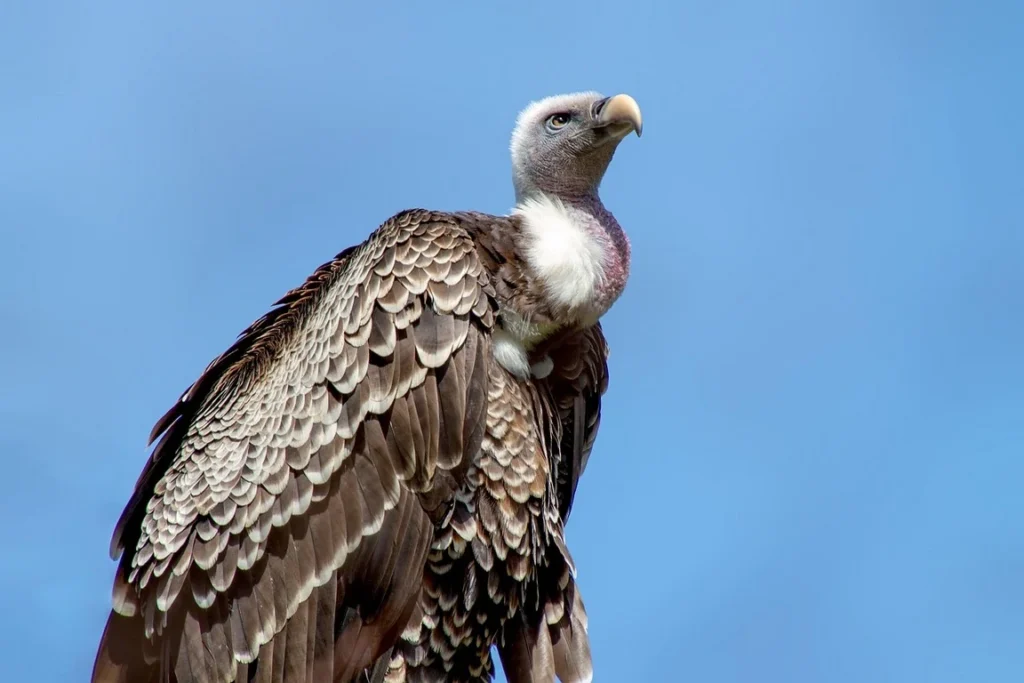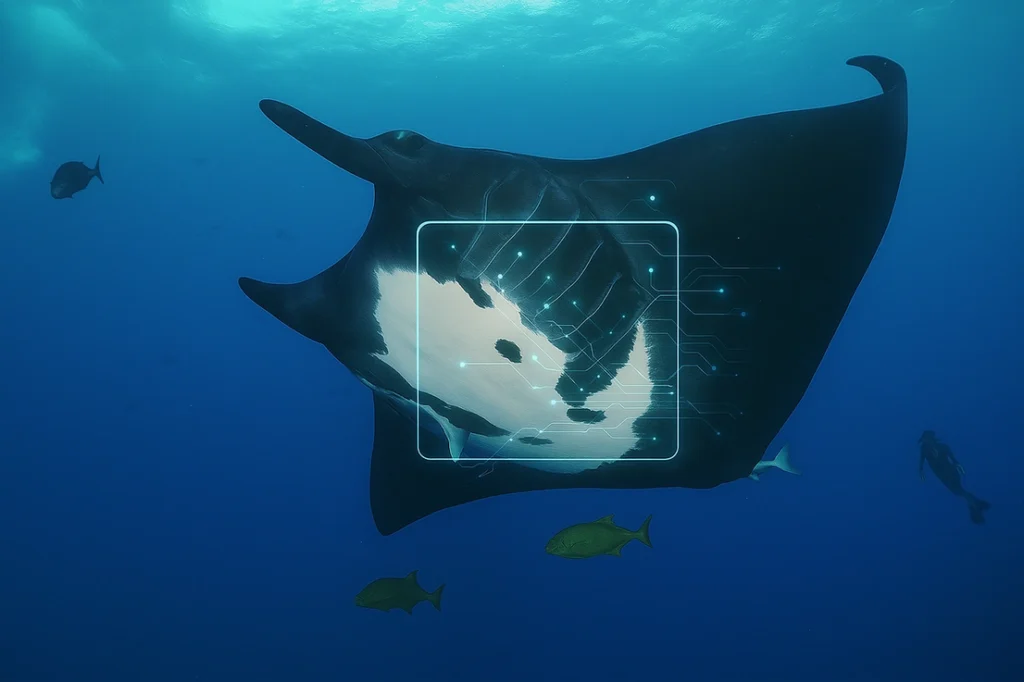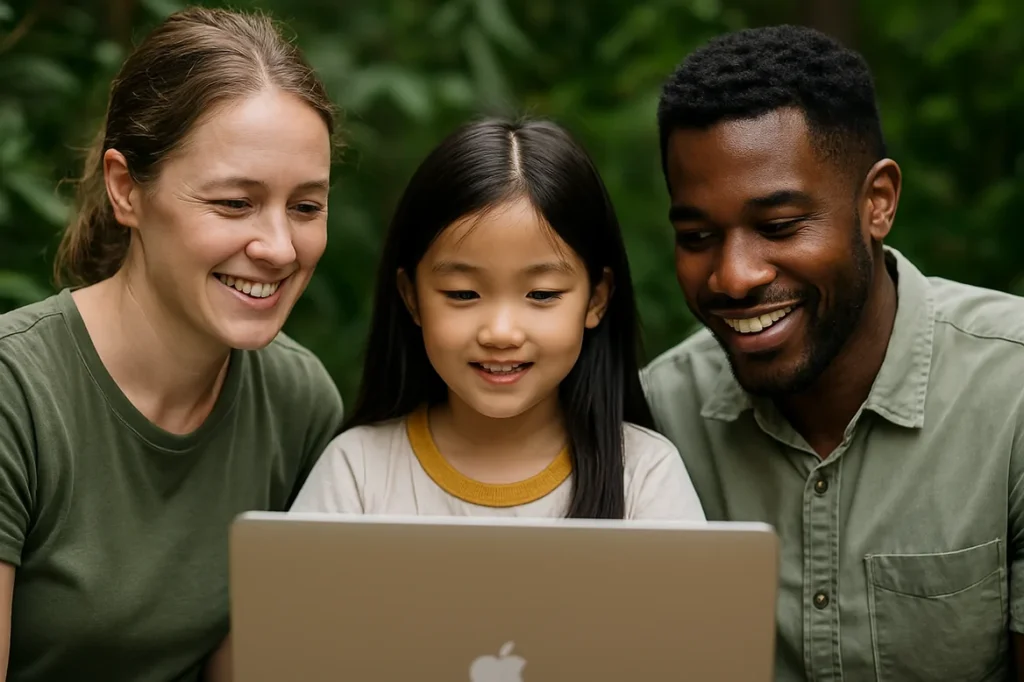
Saving endangered species, stopping poachers, predicting deforestation, or identifying animals just by their sounds—these are no longer science fiction. Artificial intelligence (AI) is no longer confined to labs or tech startups. It has quietly, yet rapidly, entered the world of rainforests, savannas, and ocean depths—emerging as one of the most powerful allies for conservationists. And rather than replacing people, in these cases it does the exact opposite: it helps them act faster, smarter, and more effectively. Whether it’s tracking wildlife, protecting against poaching, or mapping habitats, AI in wildlife conservation offers tools that could transform the way we protect nature—and, by extension, our shared future.
Vultures as aerial rangers in the fight against poachers

In some parts of Africa, saving endangered species relies on unexpected allies—vultures. These birds, often unfairly overlooked or viewed negatively, have become a vital tool in the fight against poachers thanks to modern technology. As part of the GAIA initiative, researchers equipped vultures with GPS transmitters, and their flight behavior is analyzed by AI (RESET – Digital for Good). When the AI system detects an unusual gathering of vultures in a specific location, it may signal the presence of a fresh carcass—sometimes the result of illegal hunting. The system automatically alerts park rangers. This way, rangers receive real-time intel and can respond faster, significantly increasing the chance of catching poachers in the act. Poachers can no longer rely on remote areas to keep them hidden.
According to Ashenews Daily, the combination of AI, telemetry, and bird behavior represents a technological revolution in conservation. Ironically, vultures are helping save the lives of other animals—even though they themselves often require protection, as they’re also an endangered species.
The Wall Street Journal in 2023 described specific cases in Uganda, where tracking vultures helped identify sites where elephants or other animals were killed, opening new possibilities for connecting artificial intelligence with natural ecosystems.
When AI takes over analyzing camera trap images

Camera traps are a proven tool for monitoring wildlife. They collect valuable data about animal presence across regions worldwide. However, processing the enormous volume of images used to be extremely time-consuming. Today, AI is increasingly stepping in to support conservation efforts. Organizations like WWF use AI to sort and analyze data from sensors and camera traps. AI systems automatically identify animal species, count them, track their behavior, and log locations. These tools are also trained to recognize new species using public databases and local training data—saving tremendous time and allowing quicker responses to threats facing endangered animals (WWF – AI buys valuable time to protect wildlife).
On a global scale, the Wildlife Insights platform compiles millions of images from across the world. With AI, it can automatically identify over 1,000 animal species, dramatically speeding up access to wildlife behavior data. Instead of spending weeks reviewing photos manually, researchers now get relevant data in minutes.
AI can even go further—not only identifying species, but also recognizing individual animals. One good example involves manta rays. Scientists are developing software capable of recognizing individual rays in real time based on their unique skin patterns. This precise tracking could significantly aid in protecting species vulnerable to overfishing or habitat disruption (experiment.com).
Thanks to AI, conservationists can now do what would otherwise be logistically impossible—have “eyes on the ground” almost constantly, and across vast areas.
When sound says more than images: AI and acoustic nature mapping

Not all animals can be tracked by sight or captured by a camera lens. Many stay hidden in dense foliage, are active at night, or are simply too shy. However, many of them produce sounds that may hold the key to monitoring their presence. And AI is learning to understand this acoustic language of nature.
In Ecuador’s tropical forests, researchers installed sensitive recording devices that gather thousands of hours of wilderness audio. With AI, they can determine which species have returned to previously deforested areas—helping track the success of forest regeneration. This approach led to valuable insights, showing that some forests can recover surprisingly fast—in as little as 25 years. (Mongabay, 2023)
Similarly, the Australian Google Ecoacoustics project demonstrated that AI models can recognize the call of specific bird species—like the rare black cockatoo—even amidst forest and wind noise. Researchers can thus track this endangered bird without ever needing to see it. This research uses open-source AI libraries like TensorFlow.
In North America, the National Wildlife Federation is developing tools that allow AI to “listen” to landscapes and recognize calls of mammals, birds, and even amphibians. The goal isn’t just to detect species, but to map their real-time behavior—including disturbances caused by human activity or climate change.
Sound is becoming a new language for conservation—and artificial intelligence is the interpreter helping us understand nature before it’s too late. These tools have already helped discover new species, track migration changes, and detect poachers in real time based on the sound of gunfire. This makes it possible to monitor rare species in real time—without disturbing their natural behavior.
Open-source AI in wildlife conservation: How Wildlife.ai empowers local efforts

While major organizations bring powerful tools, open initiatives are emerging that connect experts, conservationists, volunteers, and local communities. One such initiative is Wildlife.ai, which builds a platform to develop and share AI tools focused on wildlife protection. They work with local conservation projects and develop open-source solutions based on machine learning.
Their approach is unique: instead of centralized technologies, they create open-source tools accessible in less developed regions—where threats are often greatest—while partnering with on-the-ground conservation efforts. Their tools assist in identifying species from photos, analyzing audio data, and even supporting education and local capacity building (Using the power of AI to identify and track species – WWF).
Some of their main projects include:
- Pepeketua ID: A pattern recognition tool that makes it easier to identify individual Archey’s frogs, which is vital for monitoring and protecting this endangered species.
- Spyfish Aotearoa: A citizen science project that uses machine learning to identify fish in underwater videos, contributing to better understanding of marine ecosystems.
- Wildlife Watcher: An intelligent camera for monitoring terrestrial reptiles and invertebrates, enabling non-invasive observation of these species.
How AI in Wildlife Conservation Is Quietly Changing Everything
Technological progress is often associated with harm—from pollution and habitat destruction to climate change. But in the case of AI in wildlife conservation, we’re witnessing something very different. These innovations aren’t replacing nature—they’re helping us better understand, respect, and protect it.
From spotting poachers in remote savannas to identifying manta rays by their skin patterns, AI is quietly—but rapidly—making a difference. Not as a replacement for human care or field expertise, but as a new layer of insight and possibility. When used responsibly, technology becomes a partner in preservation.
And perhaps that’s the most hopeful part of all: the realization that the tools shaping our future don’t have to come at the planet’s expense—they can be designed to help us protect it.
Are you interested in real stories of nature conservation that are inspiring and grounded in facts?
Want to make better decisions—for yourself and for the planet—without extremes, marketing gimmicks, or noise?
Follow EcoCompass and let us guide you through the world of sustainability with clarity and insight.
